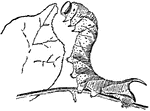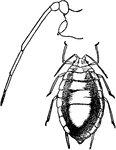This ClipArt gallery offers 486 pictures of insects from the order Lepidoptera, including moths and butterflies in adult, caterpillar, and larval stages.
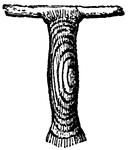
Case of Woolen Moth Attached to a Piece of Cloth
"When they are full grown, and the time approaches for their metamorphosis, they abandon their food,…
Larva of Woolen Moth Walking (Tinea Tapezella)
This caterpillar builds a case around itself using bits of cotton taken from clothing. If it does not…

Cocoon of Zygaena Filipendulae
"The caterpillar is yellow, spotted with black; its cocoon is boatshaped, with longitudinal furrows,…
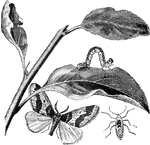
Male, Female, and Larva of the Mottled Umber Moth
Mottled umber moth is the common name of hybernia defoliaria. The moths emerge between October and March.…
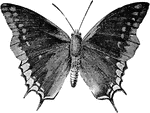
Mourning Cloak
A butterfly native to Eurasia and North America. It has wings that are dark red with a yellow border.

Noctuina
"The Noctuina form an eceedingly large group of nocturnal moths, although even here there are a few…

Noctuina
"The Noctuina form an eceedingly large group of nocturnal moths, although even here there are a few…

Orange Dog
The Orange Dog, caterpillar of Papilio creshontes, with osmateria, or scent organs, extended.

Pamphila Ethlius
In this latter series the fore-wings are much more pointed than in the other, and the body is proportionately…

Potherb Moth
The hind wings of the potherb moth are frequently unspotted. The body is thick and heavy. The color…

Promethea Cocoon
Shown is the lengthwise section of the promethea cocoon. Also shown is the valve-like opening where…

Promethea Moth Cocoon
The cocoon of the promethea moth is made in the roll of a leaf. The insect weaves a web around the leaf…
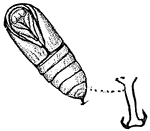
Fallweb Worm Pupa
An illustration of a fallweb worm pupa. Fall webworm, Hyphantria cunea, is a moth in the family Arctiidae…
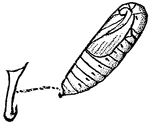
Fallweb Worm Pupa
An illustration of a fallweb worm pupa. Fall webworm, Hyphantria cunea, is a moth in the family Arctiidae…

Puss Moth
The Puss Moth (Cerura vinula) is a lepidoptera from the family Notodontidae. The puss moth is stinging…

Puss Moth
The Puss Moth (Cerura vinula) is a lepidoptera from the family Notodontidae. The puss moth is stinging…
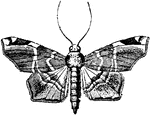
Pyralidina
"The Pyralidina are a group of small moths readily distinguished by their long slender bodies and large…
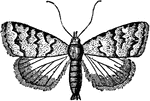
Pyralidina
"The Pyralidina are a group of small moths readily distinguished by their long slender bodies and large…
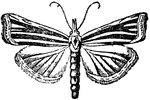
Pyralidina
"The Pyralidina are a group of small moths readily distinguished by their long slender bodies and large…

Pyralidina
"The Pyralidina are a group of small moths readily distinguished by their long slender bodies and large…
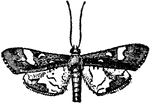
Pyralidina
"The Pyralidina are a group of small moths readily distinguished by their long slender bodies and large…

Rocky Mountain Locust
Rocky Mountain Locust. A) female in different positions, B) egg sac, C) loose eggs, D) and E) earth…
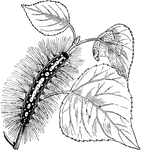
Caterpillar of the Satin Moth
Satin moth is the common name of liparis salicis. The caterpillar bears a row of white spots down the…

Satyrus Balder
"The Satyridae are found in every quarter of the globe, and seem equally at home on open plains, in…
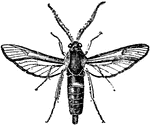
Sesiidae
"Clear-winged moths, Sesiidae, day-fliers, and looking more like bees, wasps, and ichneumons which they…
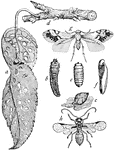
Resplendent Shield Bearer
"Resplendent Shield-bearer (Coptodisca splendoriferella). a, leaf of apple showing work; b, summer larva;…

Silkworm
"Silk is the peculiar glossy thread spun by the caterpillars or larvae of species of moths, and a well-known…

Silkworm Moth, Caterpillar, and Chrysalis
"This important insect is a native of the north of China; and a great portion of the supplies of silk…

Skipper
"The Hesperidae or Skippers, so called from their jerky hesitating mode of flight, show, in the thickness…

Skipper
"The Hesperidae or Skippers, so called from their jerky hesitating mode of flight, show, in the thickness…
Larva of a Small Cabbage Butterfly
Generally, larva of the butterfly resembles a worm. Larva do not resemble the mature insect.
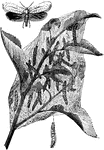
Small Ermine Moth and Web of Caterpillars
The front wings are the small ermine moth are white or gray with numerous small black dots. The lower…
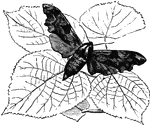
Lime-tree sphinx
"The Lime-tree sphinx, Sphinx tiliae, has the wings denticulated and angular; it is nocturnal,…

White-Lined Morning Sphinx
Deilephila lineata"...a common American moth of striking coloration, whose larva feeds on purslane."…

White-Lined Morning Sphinx
Deilephila lineata"...a common American moth of striking coloration, whose larva feeds on purslane."…

Milkweed Tiger Moth Larva
The larva Milkweed Tiger Moth (Euchaetes egle) is also known as the Milkweed Tussock caterpillar.

Milkweed Tiger Moth
The Milkweed Tiger Moth (Euchaetes egle) is an insect in the Arctiidae family of tiger moths.

Tineina
"The Tineina contain the smallest of the Lepidoptera, and are best known as clothes moths. These clothe…

Tineina
"The Tineina contain the smallest of the Lepidoptera, and are best known as clothes moths. These clothe…
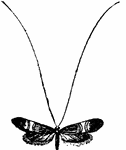
Tineina
"The Tineina contain the smallest of the Lepidoptera, and are best known as clothes moths. These clothe…
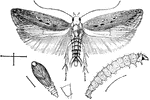
Tobacco Split Worm
"Tobacco split worm: adult moth above; larva below at right; pupa below at left, with side view of enlarged…

Tomato Worm
The Five-Spotted Hawkmoth (Manduca quinquemaculata) is a brown and gray hawk moth of the Sphingidae…

Tortricina
"The Tortricina include a great number of small moths exceedingly injurious to orchard and other trees.…
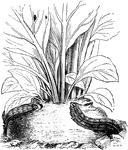
Caterpillar of Turnip Moth
Turnip moth is the common name of agrotis segetum. The caterpillars live on turnip roots, harming the…

Vapourer Moth
Vapourer moth is the common name of orgyia antiqua. Pictured is the male moth. The body is dark brown…
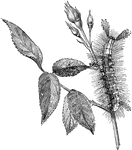
Larva of Vapourer Moth
Vapourer moth is the common name of orgyia antiqua. The larva is covered with yellowish hairs. The larva…








